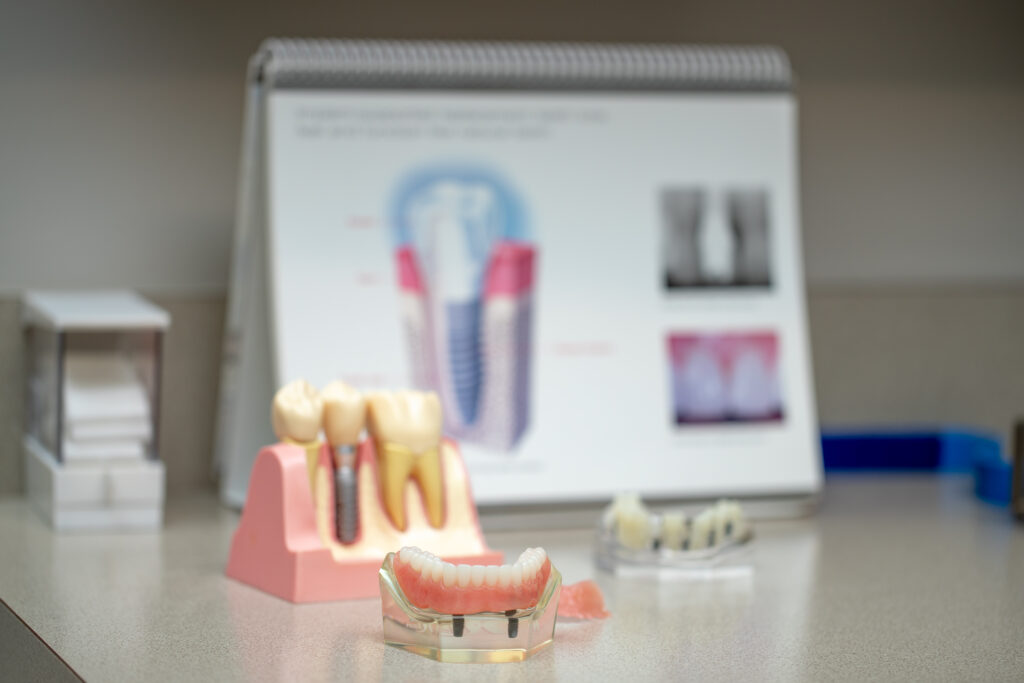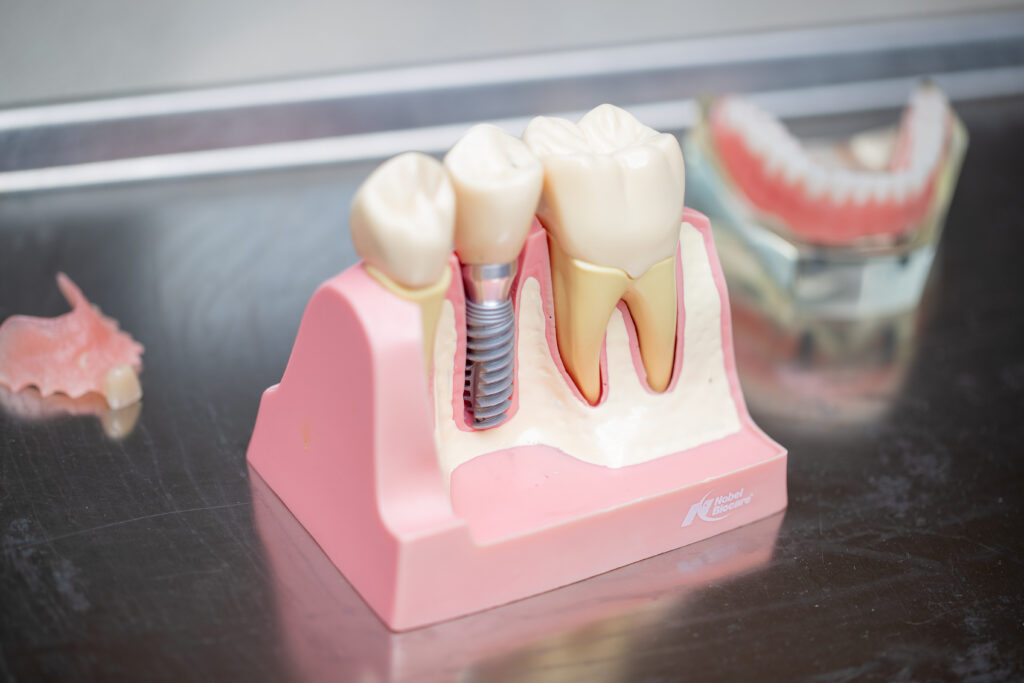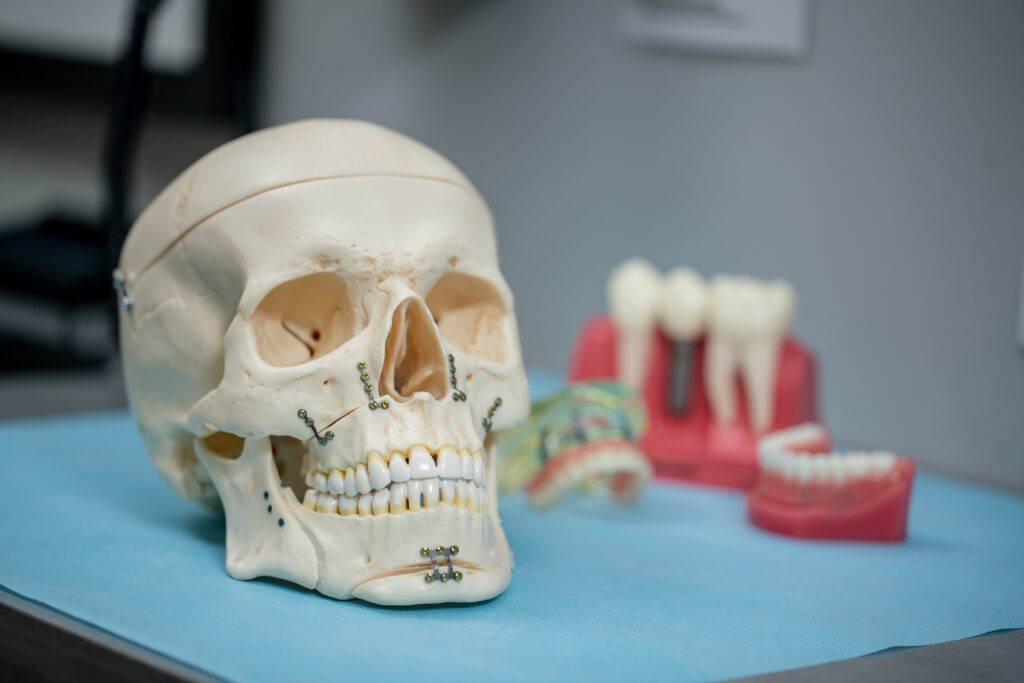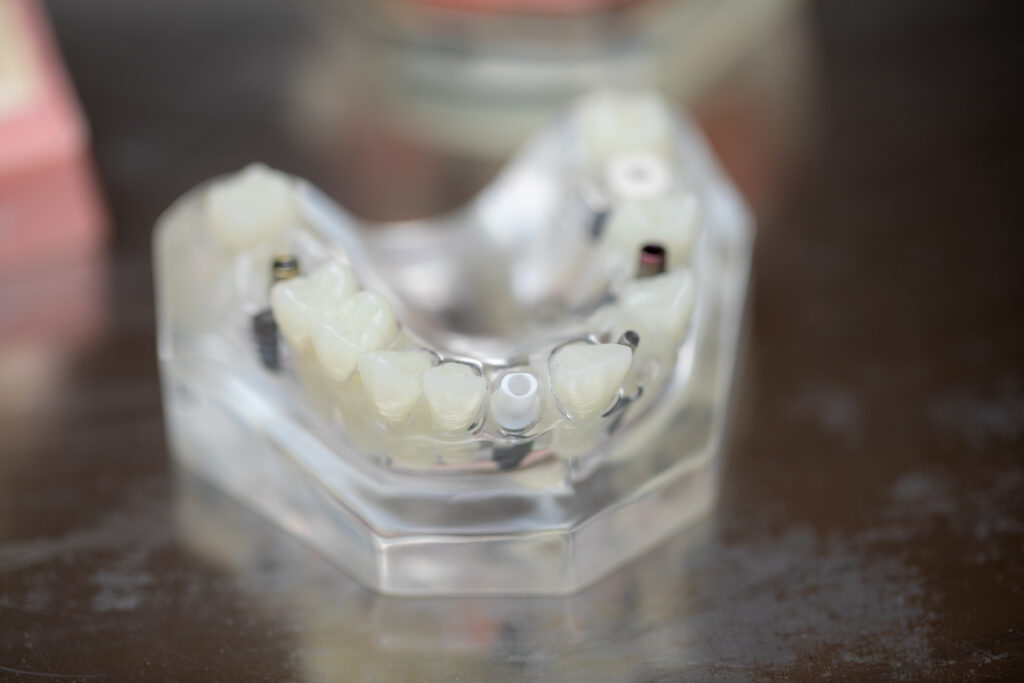restore comfort, function, and the appearance of your smile
Dental Implants
Missing teeth can interfere with your daily life and make you feel self-conscious. Dental implants provide a unique opportunity to restore comfort, function, and the appearance of your smile.
What are dental implants?
A quick comparison of implant-supported replacement teeth with a natural tooth reveals that they are very much alike. Both consist of a crown – the part you see and use to chew food – as well as a root that holds the tooth in place. The root keeps the tooth under the gum, anchoring it into the jaw.
Dentin composes the inside of the root of a natural tooth (as with the crown) with a covering of cementum, which is a calcified substance, whereas the implant is made of titanium. Surgeons have used titanium for artificial joints for years because it is highly resistant to corrosion.
Losing a tooth means losing both the root and the crown. With an implant replacement, the oral and maxillofacial surgeon replaces the root with a small titanium replacement – the implant.
Once the dental implant is placed, the jaw bone heals and begins to grow around the implant; over time the bone bonds with the titanium, and a strong foundation for artificial teeth develops. The oral and maxillofacial surgeon also attaches a support post, called an abutment, to the implant, to which a new replacement tooth – the crown – is placed. In many cases this can happen within the same procedure as attaching the implant.
If all your teeth are missing, you have a variety of treatment options available to support the replacement teeth.
The Surgical Procedure
For one implant you can expect a 30 to 60 minute procedure, and multiple implants require only 2 or 3 hours. The time and number of visits required vary from one patient to the next, and you can be sure the surgeon will exercise great precision and attention to details throughout.
Prior to surgery you will engage in discussion about various helps available for reducing pain. You may also receive antibiotics and possibly, for greater comfort, intravenous sedation or nitrous oxide (laughing gas). The office staff will review the possibilities with you in your consultation appointment. You will also receive a local anesthetic to numb the area where the implant will be placed.
After you are comfortable, the surgeon begins the procedure by making a small incision in the gum tissue to reveal the bone. Special instruments will create space and the surgeon will then insert the titanium implant into the socket. Often the implant can be seen through the gum, and in some cases it may be beneficial to have the implant covered by gum tissue in the early stages of healing.


The Healing Phase
Following the implant procedure the period of healing begins. Healing time after implants will vary individually depending on the quality and quantity of bone at the site, and may be a shorter or longer time accordingly. Occasionally the implant can be restored as soon as it is placed. The oral and maxillofacial surgeon will decide based on the situation how long the healing time should be and advise you accordingly, along with follow-up care.
Following the initial phase of healing, the oral surgeon places the abutment or a healing cap onto the implant during a short follow-up visit. The cap or the abutment allows gum tissue to heal to a normal state while allowing access to the implant.
It is good to make impressions at the time the implant is placed, which makes it possible to attach the crown as soon as the implant has healed. Factors that determine how long your mouth needs to heal vary, and follow-up appointments (one to four) will allow the oral surgeon to track the progress of healing and determine when you are ready for the restorative phase of your treatment.
In certain cases a soft tissue graft creates stronger, more natural looking and easier to clean gum tissue around the implant. The surgeon moves a small amount of gum tissue from another part of your mouth to the area surrounding the implant. This is generally a quick and relatively comfortable procedure.
Finally, your dentist will complete the restoration by fitting the crown to the dental implants. At that point, your new teeth will be as close to the real thing as they can possibly be.
When Are Dental Implants Placed?
We normally place implants several months after extraction, although, at times, this may happen immediately after you have a tooth removed. Speeding up the process may involve a little more risk but it certainly simplifies things and reduces the number of times you have to go into the surgeon’s office. However, if the bone has evidence of infection or another problem, we will wait to resolve that before placing an implant.
When a tooth has been lost for a considerable length of time, support bone in the immediate area generally shrinks and grows thinner. The root of the natural tooth is not there to stimulate the bone. You can lose upwards of 33% of your jaws thickness within a year following a tooth extraction. With a loss of bone, the surgeon may graft additional bone into the area in order to ensure adequate support for the implant in the jaw.


How Many Implants Do I Need?
Normally there is one implant for each missing tooth. However, the molars in the back of your jaw have two or even three roots, in which case the common approach is to use larger implants in replacing missing back teeth.
The All on 4 method allows your oral and maxillofacial surgeon to add more teeth at once. This has become a preferred method for replacing groups of teeth because it means you can get your entire upper or lower teeth done in a day.
Call now to learn more about dental implants or to schedule an appointment to discuss this procedure.
Welcome to Desert Valley Oral Surgery
At Desert Valley Oral Surgery, we know how to help you. Our board-certified surgeons and expert staff can provide the care you need to relieve the discomfort you feel.

